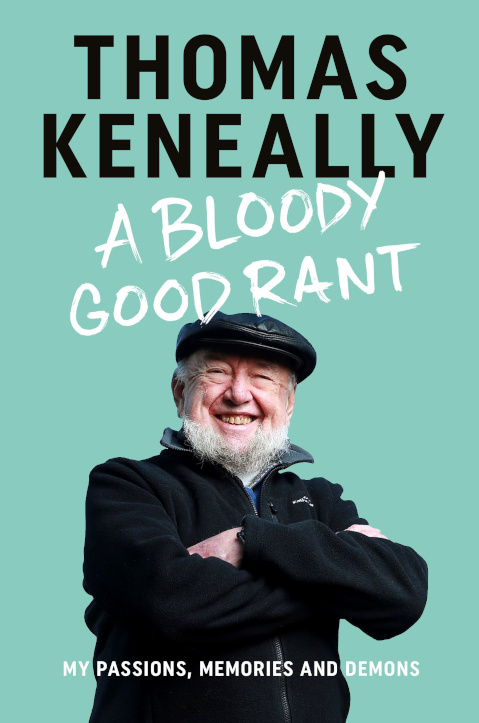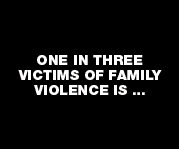Do We Ignore Violence Against Men? - G. Andresen & M. Woods
A call for fairness and accuracy in media reporting during White Ribbon Day and 16 Days of Activism to Stop Violence Against Women, 25 Nov to 10 Dec 2007.
This Sunday is White Ribbon Day (WRD) and the start of the Sixteen Days of Activism to Stop Violence Against Women (SDA). This annual spotlight on violence against women, while extremely worthy, is ineffective at reducing violence because it emphasises gender as the primary explanation for violence while ignoring or downplaying a significant body of evidence indicating that other factors are most likely involved. Violence is most prevalent amongst young people, and is causally linked to social disadvantage, drug and alcohol abuse, mental health issues, and inadequate conflict management and affect regulation skills.
These campaigns also tend to suggest that women are the major victims of violence in our communities when in fact males are far more likely than females to be victims of formalised violence (including war and human trafficking); street, pub and sporting violence; and are a significant proportion of victims of forms of violence usually associated with female victims, including sexual assault, stalking, harassment and domestic violence. The most recent comprehensive survey of violence in Australia revealed that, in the past 12 months:
• 808,300 men were victims of violence overall (almost two thirds of all victims)
• 485,400 men were victims of physical assault (two thirds of all victims)
• 392,800 men were victims of physical threat (71 per cent of all victims)
• 42,300 men were victims of sexual assault (almost one third of all victims)
• 27,900 men were victims of violence at the hands of their current or previous partner (one in five victims overall, however other studies have found that up to one in three such victims are male)
• 864,300 men were victims of harassment (over one-third of all victims)
• 110,700 men were victims of stalking (over one-third of all victims)
• the risk of physical violence in the workplace was about equal for men and women
• men were almost as likely as women to suffer physical violence within the home (half from females, half from males)
• the rate of physical assault in public places was much higher for men than women
• men and women experienced physical violence from perpetrators who were known to them at exactly the same rate.
Other Australian data shows that males make up a substantial proportion of victims of domestic violence: 26% of intimate partner homicide victims are male and 29% of victims of domestic violence notified to police are male. This is very likely an under-estimate, as men who are physically assaulted by women are less likely to report it to the police than are women assaulted by men. The relative silence of the WRD and SDA campaigns in acknowledging that males make up a significant proportion of victims of sexual crime and domestic violence raises the question of whether they are more concerned with demonising males than with preventing violence. Surely all victims of violence are entitled to support and assistance whatever their gender.
A further misleading use of data by the WRD campaign is the implication that in all instances of violence against women the perpetrator is male. While the WRD quotes the Personal Safety Australia 2005 survey to note the numbers of women who have experienced some form of violence, they neglect to mention that in one-quarter of physical assaults on women (66,500), the perpetrator was another woman.
The central premise of the WRD campaign is that Australian culture somehow approves of violence against women. However, many would disagree with this assertion, but would acknowledge that it is in fact violence against males that our culture seems quite willing to accept. Violence against males by females (but not the reverse) is quite acceptable amongst young people. The authors of a 2001 national survey of 5,000 young people aged 12-20 noted that:
• "males hitting females was seen, virtually by everyone, to be unacceptable... however, it appeared to be quite acceptable for a girl to hit a boy"
• "there was no spontaneous recognition that verbal abuse or a female hitting her boyfriend could also constitute dating violence... However... these were among the prevalent forms of 'violence' occurring"
• "the key factor behind the use of violence for females towards males was, primarily, one of an expression of frustration or anger: hence, reacting to being 'out of control' and needing to 'get his attention', 'to make him listen,'... 'guys deserve it'".
Quantitative data, while useful in illustrating the widespread nature of interpersonal violence, doesn't tell us much about the actual experiences of the victims themselves. Qualitative research into male victims of domestic violence reveals that their experience is much the same as female victims'. "In most cases, the wife's intent to control and dominate the husband entailed efforts to induce fear in him relating to his personal safety as well as the fate of the children and property in general. She would often threaten to burn the house down, hurt the children or animals, or kill herself, him or the children."
International data supports this Australian research. The US Centers for Disease Control found almost a quarter of relationships had violence, about half of which was reciprocal, and "in nonreciprocally violent relationships, women were the perpetrators in more than 70 percent of the cases," and men incurred significant injuries. They also report that each year "men are the victims of about 2.9 million intimate partner related physical assaults". A 32-nation study found women commit half of all partner violence and are just as controlling as men. Two major US universities recently found women are more likely than men to "stalk, attack and abuse" their partners. US researchers have also found that "while severe assaults by wives remained fairly steady, the rate of severe abuse perpetrated by husbands decreased between 1985 and 1992 by almost 37%. In overall comparison to the constant rate of husband abuse, the combination of such significant decreases in wifebeating represented a 50% drop between 1975 and 1992".
Men are less likely to report being victims of violence, which distorts crime data on domestic violence. But international large population-based research shows women initiate domestic violence as often as men, use weapons more than men, that men suffer one-third of injuries, and that self- defence explains only a small portion of domestic violence by either sex. Experts have expressed concern that male victims have been ignored by anti-violence campaigns and that this contributes to the intergenerational cycle of domestic violence. When male victims are ignored or just "take it," their children suffer long-term damage by the exposure and are themselves more likely to commit the violence as adults.
Even if we accept the proposition that a minority of domestic violence victims are male, there are few services available for these men. Across Australia there is a critical lack of emergency housing for men and their children; programs for their violent female partners; free para-legals to assist men with AVOs; and training for social workers or counsellors to help men who have been victims of violence.
The media campaigns conducted by WRD and the SDA present a distorted view of the nature of domestic violence by frequently referring to "violence against women and children", implying that men are more likely than women to assault or abuse children. However, research reveals that women are the perpetrators of up to 50% of physical assaults of children; 50% of recorded infanticides, and up to 7% of sexual assaults on children. Women are also responsible for the majority of instances of emotional abuse and neglect of children. In the United States, mothers acting alone are responsible for 38.8% of cases of abuse, and fathers for 18.3% of cases. In child fatalities, mothers acting by themselves are responsible for 31.3% of cases, and fathers for 14.4%.
WRD and the SDA are not the only large campaigns to take up the issue of violence against women. The Body Shop, Amnesty International, the Federal Office for Women's "Violence Against Women, Australia Says No" campaign, as well as various government "Women's Safety Strategies", all draw attention to female victims of violence, leaving the vast majority of victims of violence (males) without a campaign that speaks for them. Unfortunately many of these campaigns have also made substantial exaggerations when reporting statistics. Such errors not only present an inaccurate and misleading picture of violence to the general public, but are actually counterproductive by raising the community's fear of violence without good reason. For example:
• Access Economics claimed in "The Cost of Domestic Violence to the Australian Economy" (commissioned by the Office for the Status of Women) that 98% of domestic violence perpetrators were male. This was demonstrably untrue and not backed by any research so, belatedly, Access Economics published a corrigendum.
• Amnesty International, an otherwise esteemed organisation, erroneously claimed that "in some countries up to 69% of women have been physically abused by their male partners" and that "domestic violence is the major cause of death and disability for women aged 16 to 44 and accounts for more death and ill-health than cancer or traffic accidents." They have since quietly stopped using these misleading statistics.
• The WRD's Andrew O'Keefe claimed on the ABC's "7:30 Report" in 1996 that "the leading cause of death for women between 18 and 45 is not breast cancer but violence" - which again is not supported by data.
• The White Ribbon Day 2007 'Fact Sheet 5' claims that "men are much less likely than women to be subject to violent incidents in the home", despite the Personal Safety Australia 2005 survey's finding that men are as almost as likely as women to suffer violence at home.
The fatal flaw that seems to tie these discrepancies together is the campaigns' attempt to offer "gender" - in the form of a "patriarchal desire for control" - as the primary explanation for domestic violence. However, the data presented in this paper, along with hundreds of other research studies, indicates that gender is less important than many other factors in explaining domestic violence - women use violence against men, and against other women. The vast majority of males do not and have not committed any form of violence against women. Most women will never experience any serious form of violence, such as physical assault, from their partners. And women who are most likely to be victims of violence are those living in areas where all forms of violence occur at higher rates.
There is a large and growing body of evidence that highlights factors strongly associated with violence against women which are downplayed by gender-based campaigns such as WRD and the SDA, and by doing so, effective action to reduce levels of violence is prevented. Violence is far more prevalent amongst young people, in areas that are measurably disadvantaged; in couples with histories of alcohol and drug abuse and/or mental health problems; and in couples with inadequate conflict management and affect regulation skills.
Reducing violence requires recognising the primacy of these contextual factors. Approaches to prevention and treatment – as with child and elder abuse – should operate at multiple levels, addressing those contextual and personal factors that research consistently identifies as being implicated. The subordination of such a comprehensive approach to a "gendered" explanation means we are not effective in offering services to women - or men - who are at risk of violence.
The media has a responsibility to report fairly and accurately over the next fortnight. Violence is a community problem: labelling it a gender problem does not help to reduce it. We call on all Australians to set aside the next 16 days to consider all victims of violence, no matter what their gender, age, ethnicity or sexuality. We also seek the involvement of the entire community, including government, NGOs, and men's and women's groups, in the establishment of a new national broad anti-violence campaign.
Micheal Woods & Greg Andresen
Wednesday 21st November 2007
A referenced PDF version of this article is available here.












